[ad_1]
Scott and Dan hit up the comics racks from 58 years ago…

This week for RETRO HOT PICKS, Scott Tipton and I are selecting comics that came out the week of April 9, 1967.
Last time for RETRO HOT PICKS, it was the week of April 2, 1988. Click here to check it out.
(Keep in mind that comics came out on multiple days, so these are technically the comics that went on sale between April 6 and April 12.)
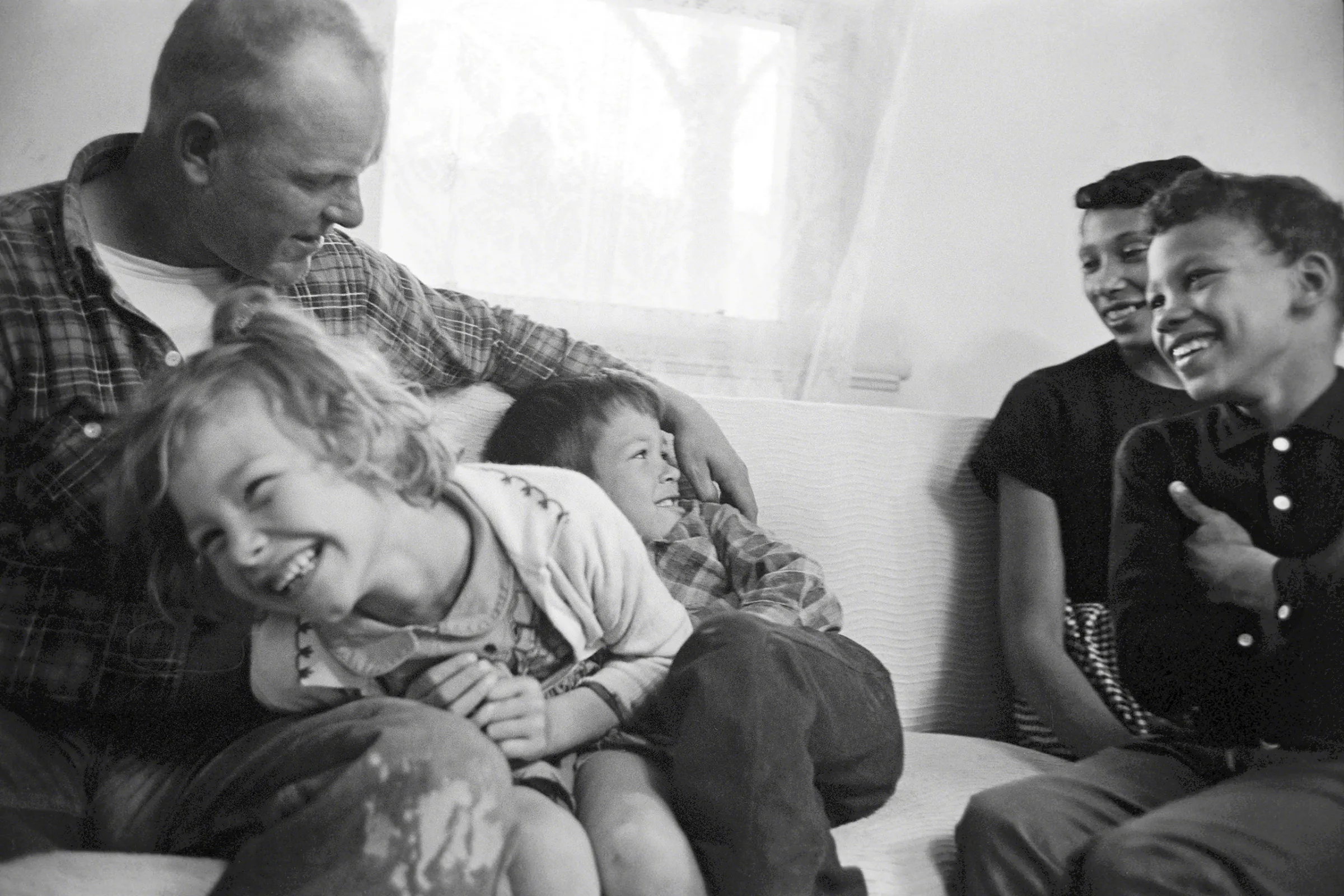
Richard and Mildred Loving, and their three children, from “The Crime of Being Married” in the March 18, 1966, issue of Life magazine. Photo by Grey Villet.
So, let’s set the scene: On April 10, oral arguments began in the landmark Supreme Court case Loving v. Virginia, which challenged state law blocking interracial marriage. Richard Loving, a white man, and his wife Mildred Jeter Loving, who was Black, lived in Virginia but in 1958 were married in Washington, D.C., to avoid the state’s racist, deplorable “anti-miscegenation” laws. They were arrested after they returned to Virginia and were forced by a judge to leave the state.
In 1963, frustrated by their inability to travel to see family in Virginia and facing financial problems and social isolation in the city, Mildred wrote to U.S. Attorney General Robert F. Kennedy, who referred them to the American Civil Liberties Union, which took up their case. It ultimately made its way to the Supreme Court and on June 12, the justices ruled unanimously in the Lovings’ favor, and interracial marriage would become legal across the country.

Baird at Boston University
On April 6, activist Bill Baird, later referred to as “the father of abortion rights,” was arrested in front of 2,500 people at a Boston University lecture, where he gave a can of spermicidal foam and a condom to a 19-year-old female student. Baird was taken off the stage by Boston police, who charged him with providing contraceptives to a minor, distributing medication without a license or a pharmacist, and “illegally exhibiting an obscene object.”
Baird’s battle also went all the way to the Supreme Court, which would in 1972 rule in his favor, effectively legalizing birth control for all Americans, as well as premarital, heterosexual sex in the United States. His case was part of the foundation for such rulings as 1973’s Roe v. Wade, which legalized abortion, and 2003’s Lawrence v. Texas, which legalized gay sex between consenting adults.
IN OTHER NEWS
— On April 7, Israeli jet fighters shot down six Syrian MiGs in one day. Earlier in the day, Syrian troops in the Golan Heights fired at a tractor driven by a farmer on a kibbutz, then began shelling the surrounding community. The Israelis fought back, Syrian tanks mobilized, the Israelis took to the air, the Syrians followed suit — and were routed. The Israelis downed all the MiGs without suffering a loss. Tensions were ramping ever higher.

Syria Syrian Arab Republic and Israel flag together realtions textile cloth fabric texture
— On April 6, President Lyndon Johnson sent the annual report of the National Science Foundation to Congress. Johnson said the report “tells a proud story of continuing progress on many scientific frontiers – of bold and creative men and women pitting their skill and imagination against the challenges and opportunities posed by Nature.”
— On the same day, Johnson posthumously awarded the Medal of Honor, the military’s highest decoration, to Army Specialist 4 Daniel Fernandez in the Rose Garden. The year before, Fernandez, serving in Vietnam, threw himself on a live grenade to save the soldiers around him. He was the first of nine Mexican-Americans to receive the medal in Vietnam.

How to Succeed in Business Without Really Trying, starring Robert Morse and Michele Lee, was No. 1 at the box office. Other films included The Bible: In the Beginning, Hawaii; Thoroughly Modern Millie; A Man for All Seasons; In Like Flint; and Hombre, starring Paul Newman. Elvis had two movies out at the same time — Easy Come, Easy Go and Double Trouble.
An American Federation of Television and Radio Artists strike ended just in time for April 10’s Academy Awards. A Man for All Seasons won Best Picture, Best Director (Fred Zinneman) and Best Actor (Paul Scofield). Elizabeth Taylor won Best Actress for the harrowing Who’s Afraid of Virginia Woolf?.

On television, Star Trek was close to the end of its first season and was battling ratings woes. Nevertheless, on April 6, one of its greatest episodes — The City on the Edge of Forever, guest-starring Joan Collins — aired for the first time. (Decades later, Harlan Ellison’s original version would be adapted into a comic book in part by none other than your RETRO HOT PICKS co-host Scott Tipton.
The Red Skelton Hour, The Andy Griffith Show, Bonanza, The Lucy Show, Bewitched and Get Smart were among the ratings leaders.
Batman and The Monkees had just finished their second and first seasons, respectively, while The Man From UNCLE was almost done with its third. Finished for good were Gilligan’s Island and The Green Hornet.

April 6. Day 3 of a four-day storyline.
This week, a new recurring character made his way into Charles Schulz’s Peanuts — a little bird who would become Snoopy’s sidekick. The bird, who didn’t have a name, had made his first appearance in the spring of 1966 but this time he stuck around, eventually becoming one of the most beloved characters in the world of Charlie Brown. A little more than three years later, in June 1970, he got a name: Woodstock.
On April 12, a young right-hander from Fresno, California, was on the eve of his major-league debut. The next day, starting on the mound for the New York Mets at Shea Stadium, the 22-year-old fireballer threw 5 1/3 innings, giving up 2 runs on 6 hits, walking 4 — and striking out 8. He didn’t get the win but New York beat Pittsburgh, 3-2, and Tom Seaver would go on to become the first Mets pitcher to ever post a winning record. He’d win the National League Rookie of the Year — and become not just the face of the franchise forevermore, but go down as one of baseball’s all-time greats.

Somethin’ Stupid, by Nancy Sinatra and Frank Sinatra, led the Billboard 100, followed by the Turtles’ Happy Together, at No. 2; Bernadette by the Four Tops, at No. 4; and I Never Loved a Man (the Way I Love You) by Aretha Franklin, at No. 9.
Top-performing albums included Deliver, by the Mamas & the Papas, at No. 2; the Doctor Zhivago soundtrack, at No. 4; the Rolling Stones’ Between the Buttons, at No. 6; the Sound of Music soundtrack at No. 8, and SRO, by Herb Alpert & the Tijuana Brass, at No. 9.
But Monkeemania was in full swing: The Prefab Four had the No. 5 single, A Little Bit Me, A Little Bit You, as well as two of the top three LPs — More of the Monkees (No. 1) and The Monkees (No. 3).

The heavyweight champs were hardly idle, however. The Beatles were working hard in the studio on their next album, but in the meantime they had two hit singles — released as a Double-A side in February — that signaled a shift in the band’s sound now that they were no longer touring.
At No. 12 was the cheerfully upbeat Penny Lane (it had peaked at No. 1) and at No. 21 was the ethereally eerie Strawberry Fields Forever (it peaked at No. 8), both of which featured sophisticated production and instrumentation that had fans and critics both wondering what else the Beatles had coming.
No one I think is in my tree, I mean, it must be high or low…
—
Dan Greenfield, editor, 13th Dimension
The Amazing Spider-Man #50, Marvel. This isn’t the first time a frustrated superhero gave up, but this is the brilliant, landmark issue — by Stan Lee and John Romita — that set the trope in cement, with a compelling story of pathos relatable to anyone who’s ever grown tired of being taken for granted or, really, just wants to walk away from it all because they’ve had it. Which is to say, all of us at one point or another. One of the most famous comics of all time, and rightly so. But you don’t need me to point that out. Hell, Sam Raimi built an entire 2-hour-and-7-minute movie around Peter walking away from the trash can with his suit draped over the edge.
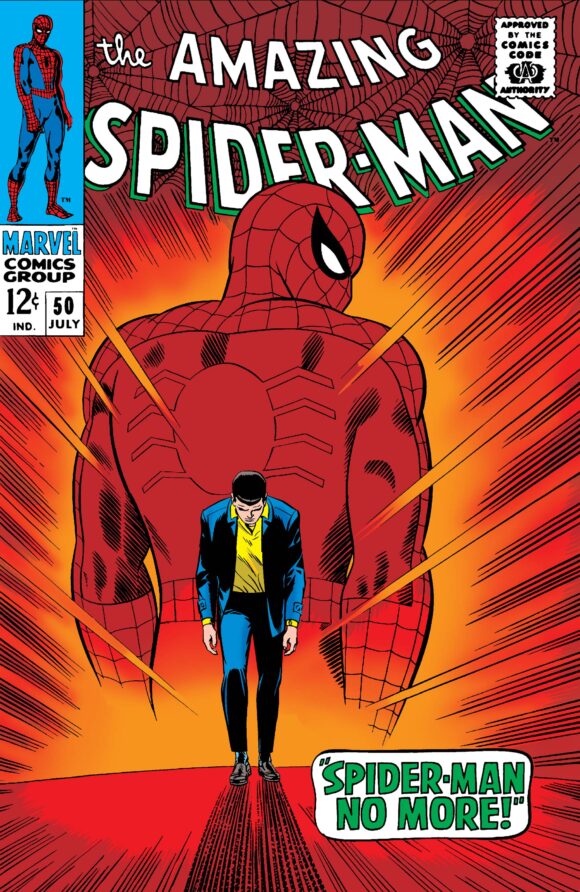
Scott adds: What else is there to say? One of the most iconic Spidey covers ever.
—
House of Mystery #167, DC. Dial H for HERO is the greatest DC TV series that’s never been. Sure, there was the derivative (yet fun) Ben 10, but James Gunn really needs to get onto this. Just imagine the merch potential (if Ben 10 was any indication)!
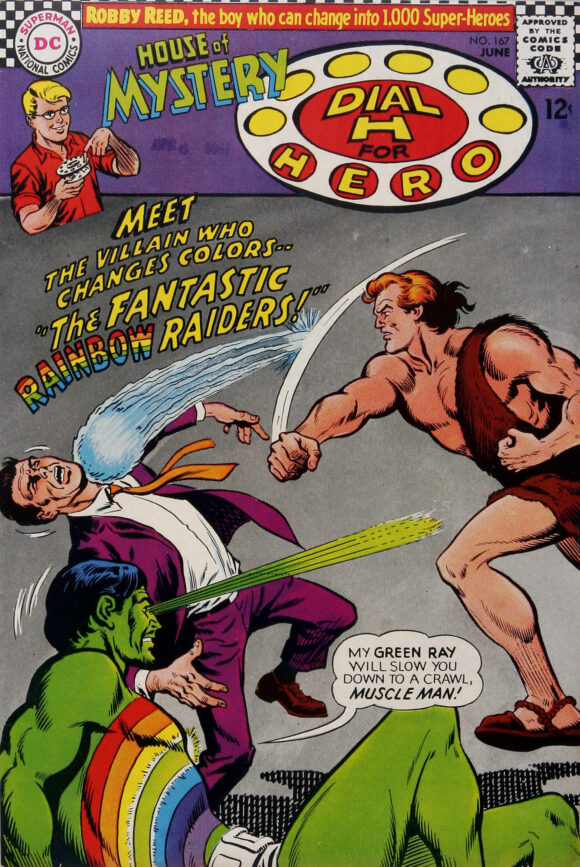
—
Doctor Solar, Man of the Atom #20, Gold Key. One of the great costume designs of the Silver Age. And a big, giant green-yellow worm, courtesy of the great George Wilson!
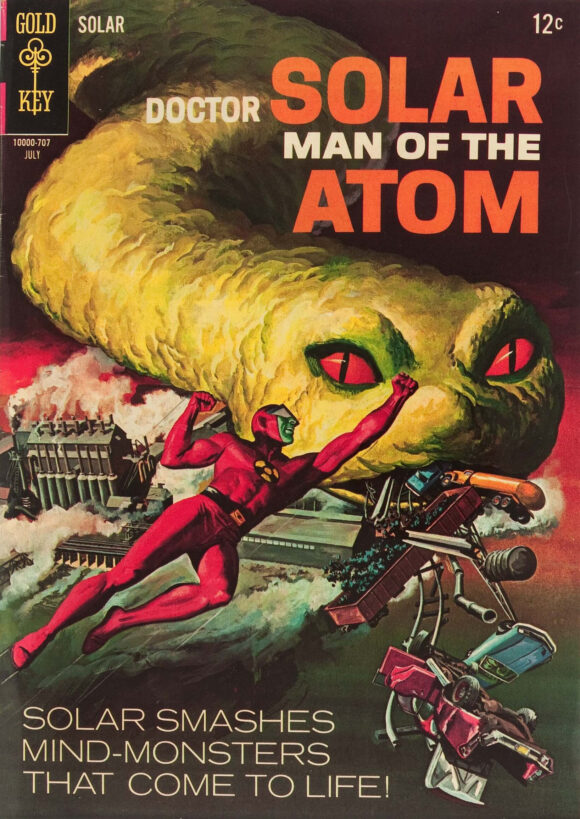
—
Hawkman #20, DC. Silver Age Hawkman is not just my favorite Hawkman, it’s one of my favorite series of the era. Especially when Katar Hol was battling the likes of Lion-Mane, who made his first appearance in this ish. Thank you, Gardner Fox and Murphy Anderson.
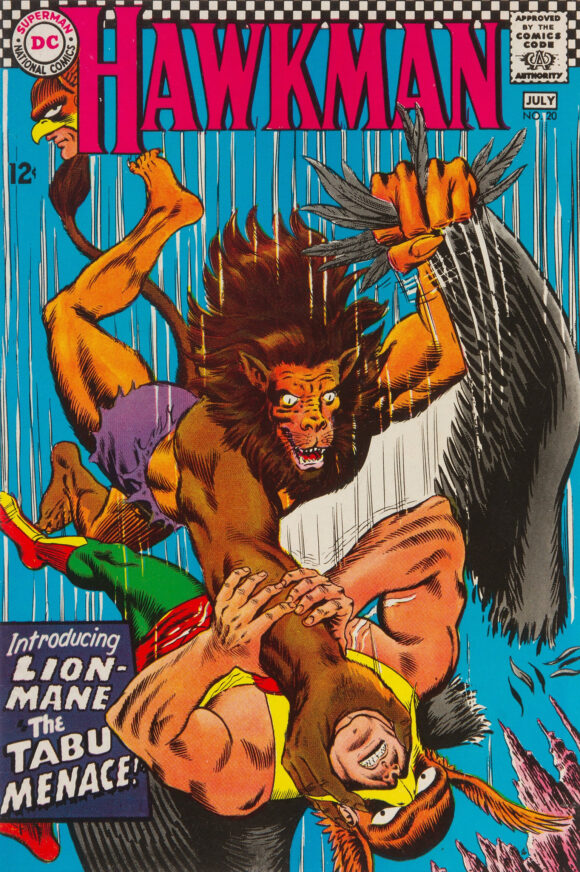
—
Tales to Astonish #93, Marvel. Basically, the Hulk wants the Silver Surfer to get him out of here, because, y’know, he’s had enough of puny humans giving him trouble. Problem is, Norrin Radd can’t leave the planet. So the Hulk, as his wont, gets pissed and like the petulant child he is, tries to get control of the surfboard but that doesn’t work either. The Surfer gets annoyed and knocks the Hulk out, then probes him and finds out that it’s the gamma radiation that’s made him all angry and whatnot. So the Surfer decides to help with some Power Cosmic hoodoo, only the Hulk wakes up and — of course — thinks he’s being attacked. The Hulk fights him off and the Silver Surfer is all, “Y’know, I’ve had enough of this stupidity,” and leaves. Plus, a story starring Namor, a character only slightly less angry than the Hulk.
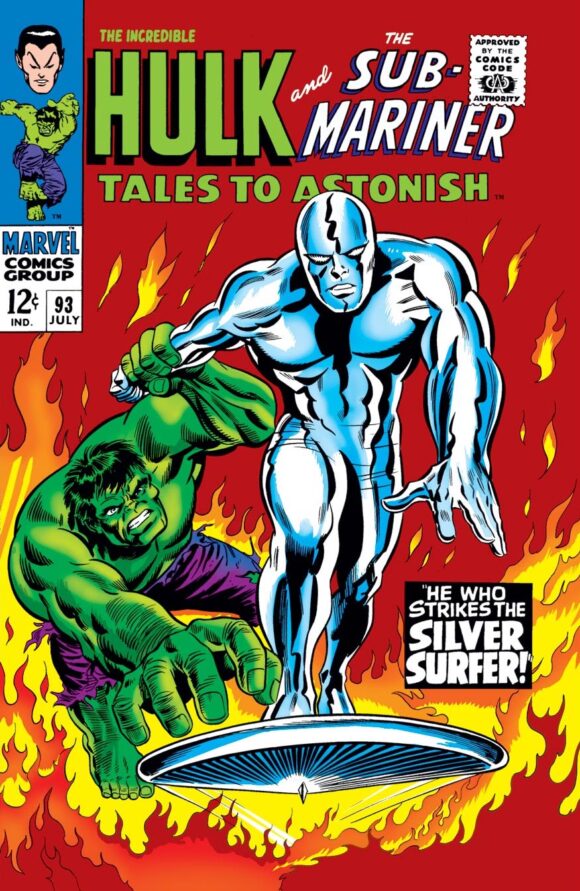
—
Scott Tipton, contributor-at-large, 13th Dimension
Superman #197, DC. I think “Caveman Clark” is my favorite.
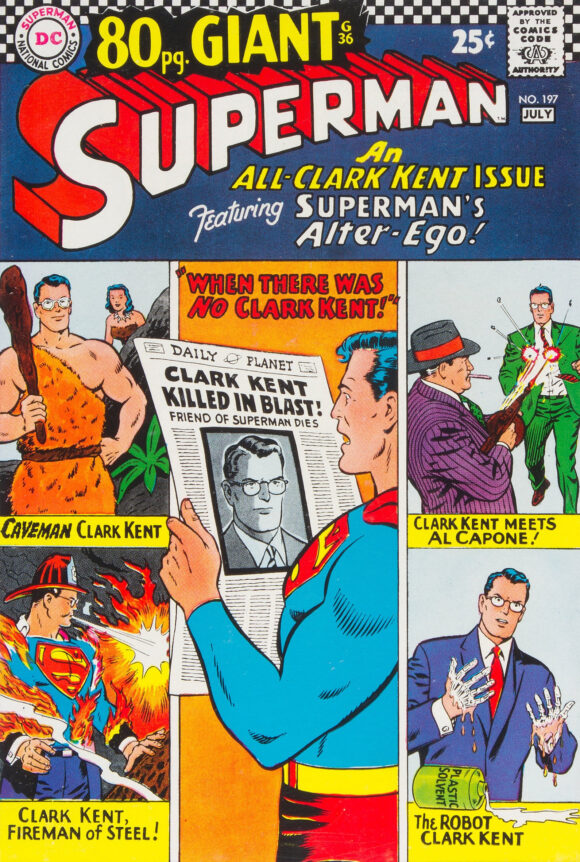
—
Daredevil #29, Marvel. The first of many, many unmaskings for ol’ Hornhead.
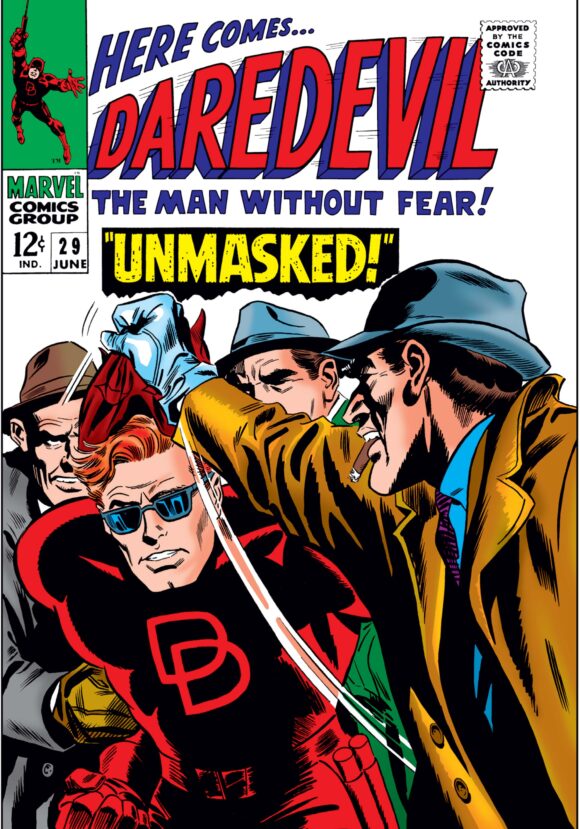
—
Fantastic Four #64, Marvel. The Sentry Sinister’s back!
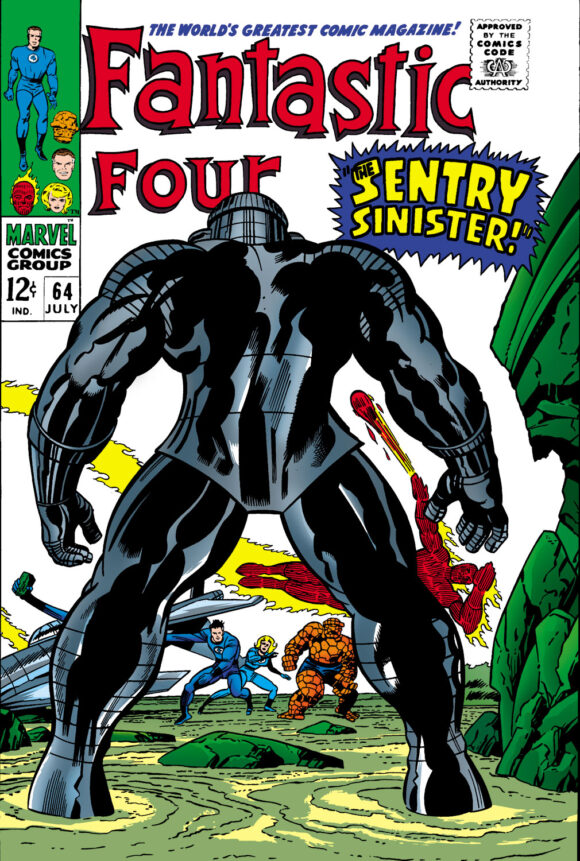
—
MORE
— RETRO HOT PICKS! On Sale The Week of April 2 — in 1988! Click here.
— RETRO HOT PICKS! On Sale The Week of March 26 — in 1970! Click here.
—
Primary comics sources: Mike’s Amazing World of Comics, the Grand Comics Database.
[ad_2]
Source link




